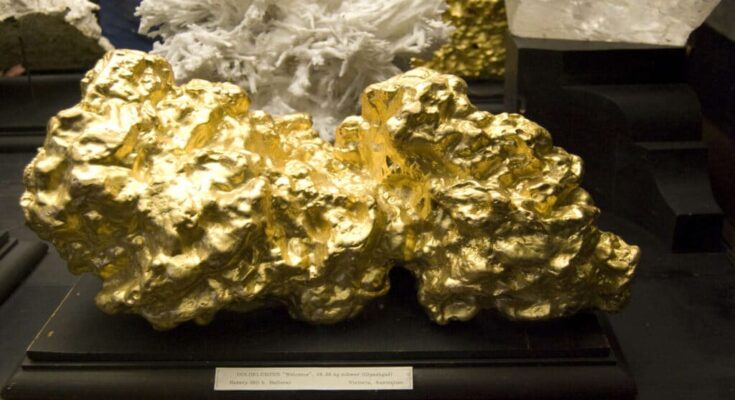
Researchers have found a new explanation for how large gold nuggets form deep underground. These nuggets are usually found along cracks in quartz, but until now, the reason behind this has been unclear.
A new study suggests that the pressure from earthquakes plays a key role. When the earth shakes, it squeezes quartz, creating electric fields. These electric fields may help in forming gold deposits.
In experiments conducted in Australia, scientists discovered that earthquake waves create enough electrical energy in quartz to pull gold from the surrounding fluids. This process might explain how the gold collects inside the mineral.
Between 2,500 and 3,000 tonnes of gold mined each year
Research published in Nature Geoscience suggests that this process could explain how large gold nuggets form. It may also shed light on the interconnected gold patterns often seen in quartz vein fractures.
The World Gold Council estimates that 2,500 to 3,000 tonnes of gold are mined annually. Most of this gold, including large nuggets, is found in quartz veins, which have produced about 75% of all mined gold. While scientists understand the basic process behind gold formation, a key mystery remains.
A recent scientific study suggests that earthquakes might play a crucial role in the formation of giant gold nuggets.
The researchers propose that the piezoelectric effect, which occurs when certain materials (like quartz, a common host rock for gold) are subjected to mechanical… pic.twitter.com/IFBstu04AE
— Entrelligence (@entrelligence_) September 3, 2024
They wonder how large nuggets, sometimes weighing tens or even hundreds of kilograms, can form when the gold content in the fluids that seep into quartz veins is extremely low—around one part per million. To form just 10kg of gold, it would take nearly five Olympic-sized swimming pools worth of water.
Piezoelectric quartz and gold nuggets
To explore this mystery, Dr. Christopher Voisey from Monash University in Melbourne, along with other researchers in Australia, conducted an experiment. They placed quartz in water containing dissolved gold and then applied pressure similar to what rocks experience during an earthquake.
Quartz has a unique property—it’s one of the few materials on Earth that is piezoelectric. This means that when it is squeezed, it generates an electric charge. This same effect is used in piezoelectric lighters, which create a spark when a button is pressed.
Dr. Voisey and his team discovered that the pressure from earthquakes could create strong enough electric fields in quartz to pull gold from the surrounding solution. This process formed tiny gold particles on the surface of the quartz, with more gold building up over time.
The researchers explained that because piezoelectric voltages occur instantly and leave no visible signs, this might explain why gold nuggets often seem to “float” in quartz veins without any clear physical or chemical cause. They suggest that this piezoelectric effect could help solve the long-standing mystery of how large gold nuggets form in such low-gold environments.



